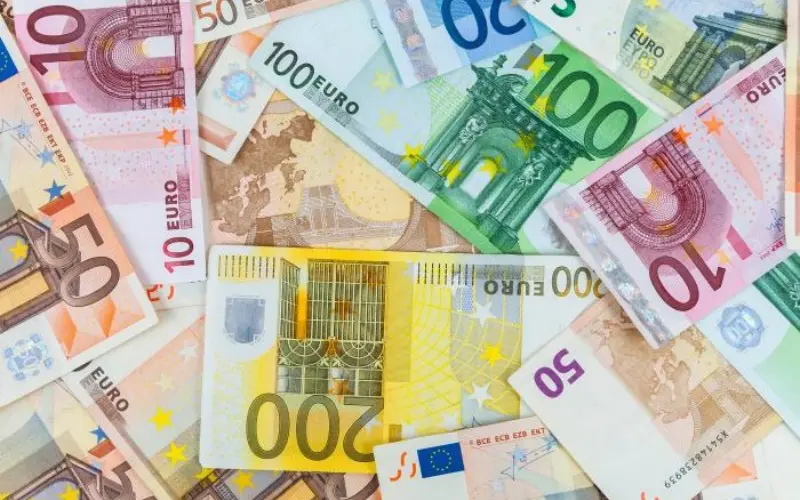The Euro is Italy’s official currency(€), adopted in 1999 as part of the European Union’s Economic and Monetary Union. Before the Euro, the Italian currency was the lira, which had been in circulation since the unification of Italy in 1861.
The Euro is further divided into 100 cents and is used by 19 of the 27 EU member states, including Italy. It is managed by the European Central Bank (ECB), responsible for setting monetary policy and ensuring price stability across the Eurozone.
Since adopting the Euro, Italy has seen a significant decrease in inflation and a more stable economy. However, the country has faced economic challenges recently, including high public debt levels and a sluggish economy.
History of the Italian currency
The history of Italian currency can be traced back to ancient Rome, where coins made of Silver and other pricey metals, such as gold, were used as a medium of exchange. These coins were minted by the Roman government and circulated throughout the empire.
In the Middle Ages, the Italian peninsula was divided into several city-states, each with its currency. These currencies were often based on precious metals, but some city-states also issued paper money.
With the integration of Italy in 1861, the Italian lira was established as the national currency. The lira was initially pegged to the French franc and later to the gold standard. During World War I and II, the Italian government was forced to devalue the lira several times to finance the war effort, leading to high inflation. Italy has had lower inflation and greater economic stability since adopting the Euro.
How to identify a Counterfeit Italian Euro?
Counterfeit currency is a severe problem in Italy and throughout the Eurozone. To protect yourself from accepting fake Italian euros, knowing how to identify them is important. Below are some tips on how to spot a fake Italian Euro:
- Check the security features: The Euro has several features that are difficult to counterfeit. These features include a watermark, security thread, hologram, and microprinting. Check for these features by holding the note to the light and looking for the watermark and security thread. Tilt the banknote to see the hologram, and a magnifying lens may be used to look for microprinting.
- Feel the paper: The Euro notes are printed on high-quality cotton paper with a unique feel. The paper should feel firm and crisp, and you ought to be able to feel the raised print of the note.
- Check the print quality: Genuine Euro notes’ print quality is extremely high, with sharp lines and clear images. If the banknote appears blurry or fuzzy, it could be a fake.
- Look for the EURion constellation: The EURion constellation is a pattern of five-pointed stars printed on genuine euro notes. This pattern is used by anti-counterfeiting software to detect fake notes. If you see this pattern on a photocopied or scanned image of a euro note, it could be a fake currency.
- Check the serial number: Each euro note has a unique serial number printed on it. Check the serial number against a database of known fake notes to see if it matches any reported counterfeits.
- Counterfeit Detection Pen: Counterfeit detection pens are available at many retailers and are a quick and easy way to test the authenticity of a Euro note. These pens use special ink that changes colour when applied to counterfeit paper.
- Look for imperfections: Genuine Euro notes are printed to very high standards, so any imperfections or inconsistencies could be a sign of a fake note. Check for smudges, fuzzy prints, or any other signs of poor quality.
- Be wary of suspicious behaviour: If someone is trying to pass you a large number of Euro notes or being secretive or mysterious, it could be a signof passing counterfeit currency.
- Trust your instincts: If something is not right, trust your instincts and don’t accept the note. If you are in doubt about the authenticity of a Euro note, take it to a bank or other financial institution for verification.
- Pay attention to the portrait: The portrait on the Euro note should be sharp and clear, with no blurriness or fuzziness. Check for any imperfections in the picture or any irregularities that could indicate a fake note.
- Look for the denomination: Each Euro note has a specific denomination printed on it, such as €5, €10, €20, €50, €100, €200, or €500. Ensure that the note’s denomination matches the value of the goods or services being exchanged.
- Check the edges: The edges of genuine Euro notes should be sharp and clean, with no fraying or roughness. If the edges of the note appear worn or damaged, it could be a sign of fake currency.
- Watch for any colour change: Some counterfeiters try to replicate the colour-changing ink used on genuine Euro notes. To test for this, rub a coin or other metal object on the coloured area of the note. If the colour changes, it could signify a fake currency.
- Use a UV light: Many Euro notes have UV features visible under ultraviolet light. Use a UV light to check for these features, which include fluorescent fibres and watermarks.
Epilogue
In conclusion, identifying a counterfeit Italian Euro note requires careful observation and knowledge of the security features of the Euro. Be sure to check for security features, feel the paper, check the print quality, look for the EURion constellation, check the serial number, use a counterfeit detection pen, look for imperfections, be wary of suspicious behaviour, and trust your instincts. By following these tips, you can protect yourself from accepting fake Italian euros and help to prevent the counterfeit currency from circulating in the economy. Do remember that “Prevention is always better than cure”.
Remitforex by Unimoni provides the best assistance for Overseas education. We help you with the best accommodation abroad with added facilities. Sending money abroad to Italy has never been this easier before! We also give a quick currency exchange with unmatched rates!!








